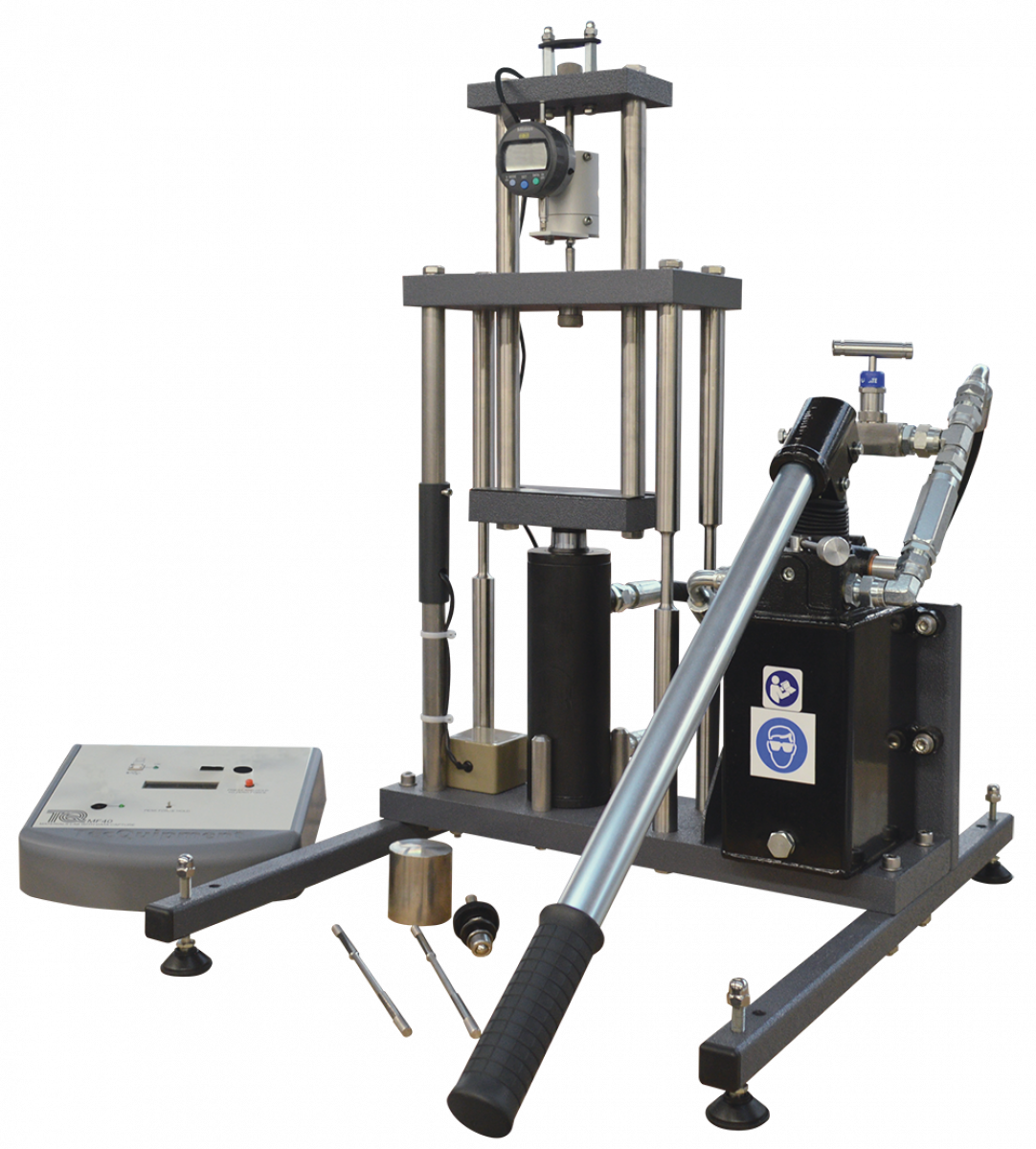Key Features:
- Ideal for classroom demonstrations and for use by small groups of students
- For Brinell hardness tests and tensile tests of materials
- Includes an extensometer for accurate tensile test results
- Electronic instruments with digital displays for easy use – includes a ‘peak hold’ function to store the maximum force (load) during a test
- Supplied with a set of test specimens – additional test specimens available separately
- Supports all teaching levels including university courses
- Includes software to automatically record results and produce charts (a suitable computer – not supplied is required)
Description:
- A hydraulic tensile and Brinell hardness testing machine.
- The machine tests any suitably shaped specimens of various materials. The material must not exceed the maximum strength or hardness limits (see ‘specifications’). TecQuipment also supply additional low-cost test specimens (available separately).
- The main parts of the equipment are:
- A load frame
- A display unit with a digital display of force (load)
- A ball indenter for Brinell hardness tests.
- An extensometer with a digital display for tensile tests
- The load frame is mounted on adjustable legs and can be fixed to a bench for stability. To apply loads, students pump a handle connected to a hydraulic pump.
- The display unit shows force and works as an interface to send data to a suitable computer. The extensometer has a digital display of extension and connects to the display unit for data capture.
- Included is TecQuipment’s MF40 software to allow students to use the equipment with a computer (not included). The software records the data and produces detailed graphs of force against elongation and stress against strain.
- To do a hardness test, students put a hardness specimen on a platen and fit the indentor. They apply a suitable load with the ball indentor and measure the impression in the specimen. They then use an equation to calculate Brinell hardness.
- To do a tensile test, students fit a specimen to the machine, attach the extensometer to the specimen and zero the display unit and extensometer. They then apply loads, taking various readings, until the specimen breaks. Students use the results to find the ultimate tensile strength, the proof stress and Young’s modulus of the material.
- The Materials Laboratory comes with a user guide that includes experiment methods, information, references and tips.
Learning Outcomes:
- Tensile testing to destruction and Brinell hardness testing of various specimens
- Modulus of elasticity
- Yield stress
- Ultimate tensile stress
- Percentage elongation
- Brinell hardness test and hardness number derivation
Specifications
- Electrical supply: 100 VAC to 240 VAC, 1.8 A, 50 Hz
- Dimensions:
- Load frame: 790 mm high, 455 mm wide, 770 mm front to back
- Display unit: 50 mm high, 230 mm wide and 210 mm front to back
- Bench Space Required: 550 mm by 800 mm with space nearby for a computer (not supplied) if data capture is to be used.
- Load frame and extensometer:
- Maximum machine capacity: 40 kN (4 tonne)
- Maximum allowable tensile strength test: 850 MPa
- Maximum allowable hardness test: 450 BHN
- Extensometer: Gauge length 50 mm, maximum indicator travel 8 mm
- Tensile specimens (five mild steel supplied): Total length 210 mm, test length 77 mm and 6 mm outside diameter. Secured by threaded ends.
- Hardness specimens (five mild steel supplied): 25 mm diameter, 15 mm thick
- Computer specifications needed for the MF40 software:
- Microsoft® Windows® 10, XP, Vista or Windows® 7 operating systems
- CD-ROM drive
- A spare USB port
For details see the catalog below:

